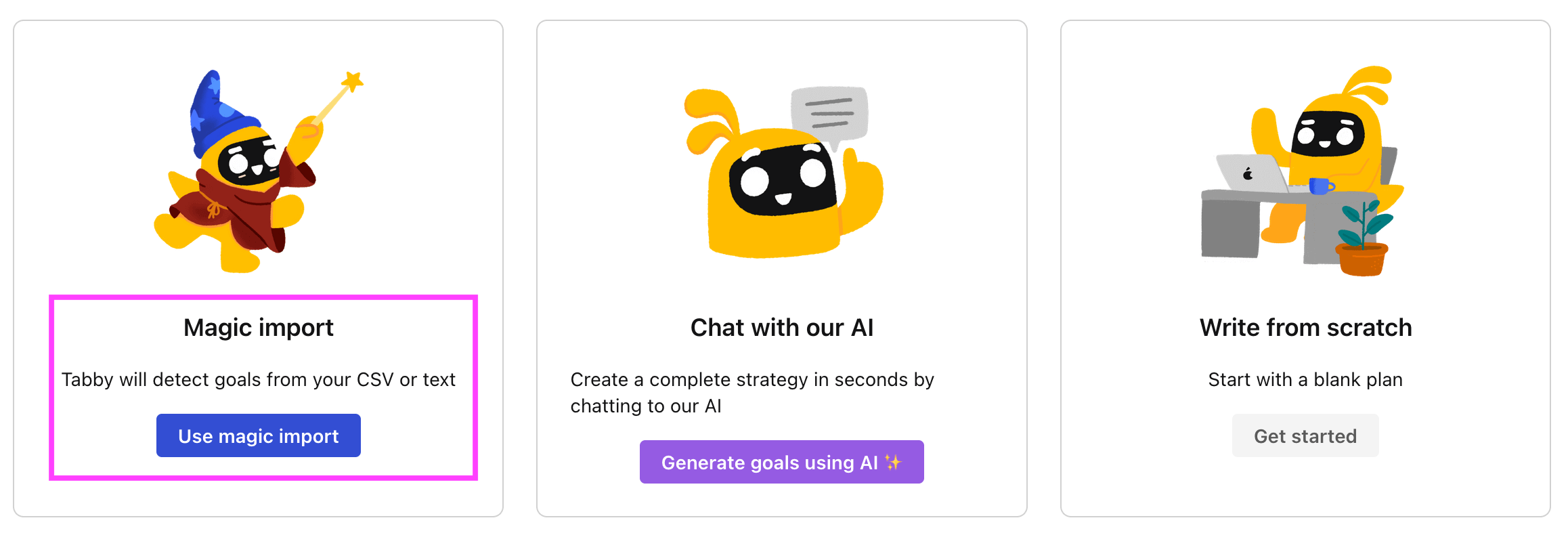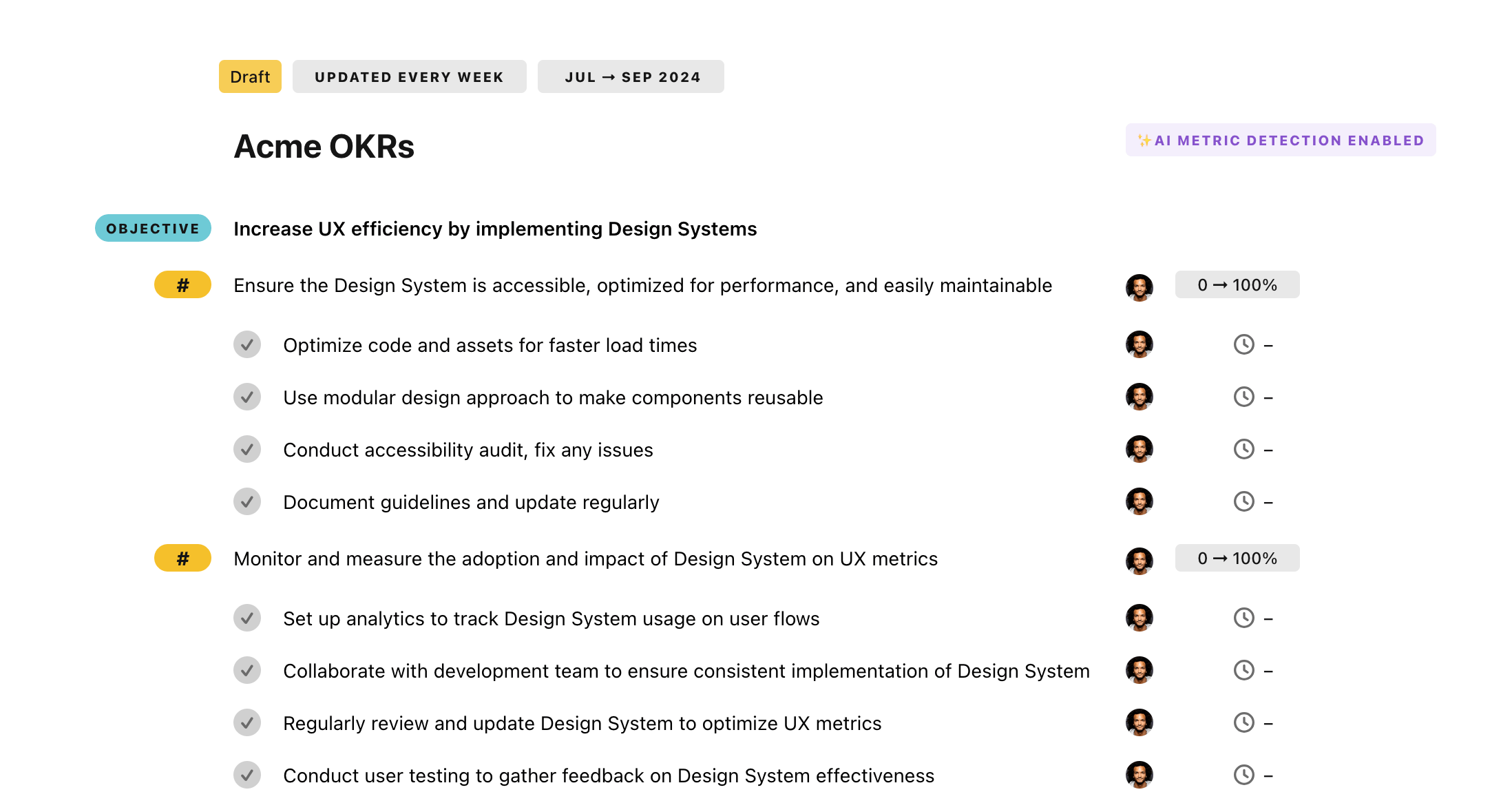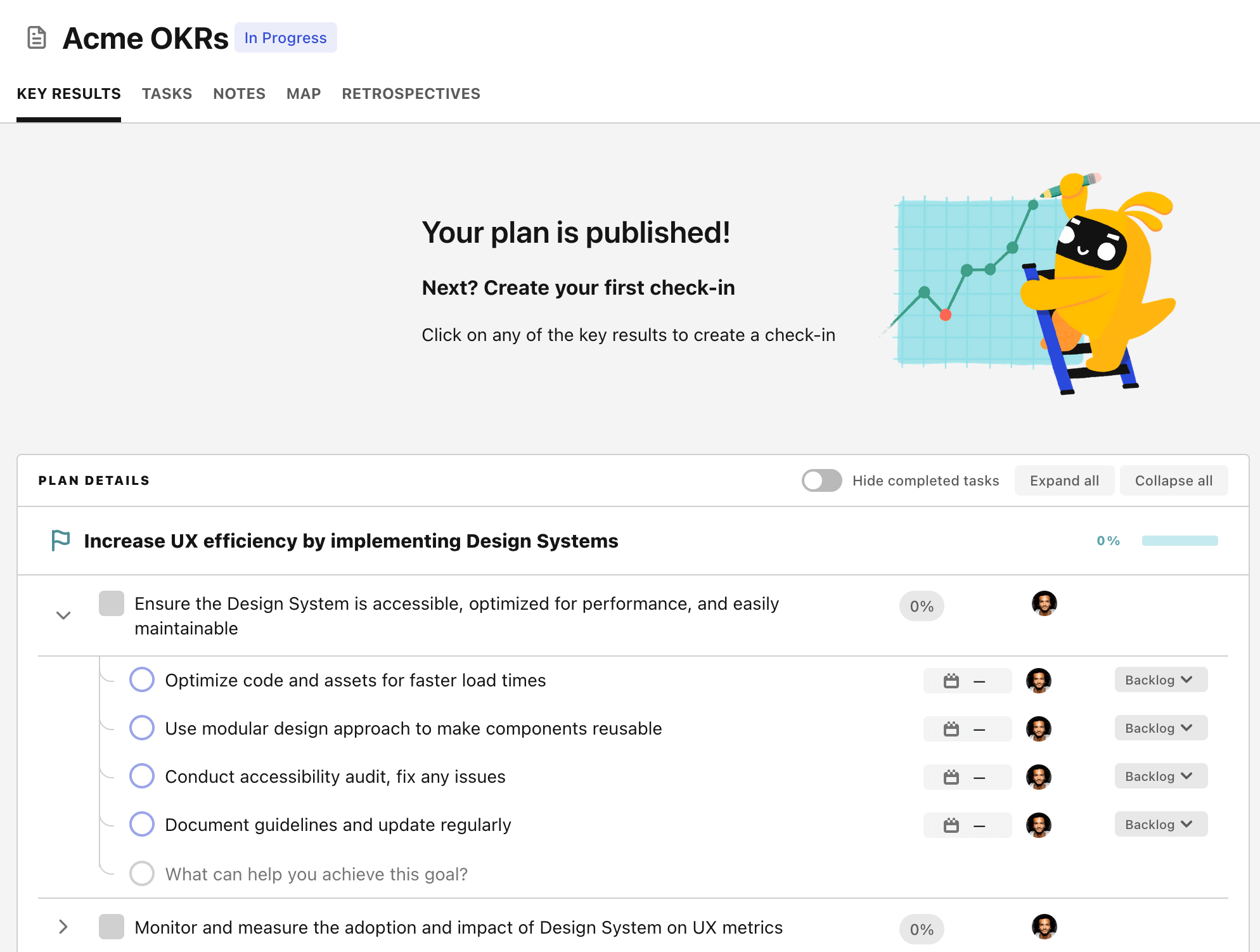OKR template to ensure product is bug-free and stable
Your OKR template
The second element focuses on enabling automated testing processes for all function areas of the product, to further ensure stability. The initiatives involve implementing and tracking test results, developing automated tests for each function, and identifying all the functions for automated testing.
The third part of the OKR aims to identify and resolve 95% of the recognized bugs within a 48 hour window. This aims to ensure rapid response times and less disruption for users, and is recognized via the development of a rapid response plan, assignment of bugs to developers, and implementation of a rigorous bug identification process - the triage process.
Overall, the ensuring of the product's stability and bug-free status forms the core of the OKR. The maintenance and introduction of advanced detection and correction systems, the initiation of a comprehensive disaster recovery mechanism, and the execution of regular automated testing processes and rapid bug-rectifying strategies help achieve this goal.
ObjectiveEnsure product is bug-free and stable
KRAchieve average application uptime of 99.5% in user operations
Establish a robust disaster recovery plan
Schedule regular preventive maintenance and updates
Implement efficient error detection and correction system
KRImplement automated testing processes for 100% of the functions
Implement and continually track test results
Develop automated tests for each function
Identify all the functions for automated testing
KRIdentify and resolve 95% of discovered bugs within 48 hours
Develop a rapid response and verification plan
Prioritize and assign bugs to appropriate developers
Implement a rigorous triage process for bug identification
How to edit and track OKRs with Tability
You'll probably want to edit the examples in this post, and Tability is the perfect tool for it.
Tability is an AI-powered platform that helps teams set better goals, monitor execution, and get help to achieve their objectives faster.
With Tability you can:
- Use AI to draft a complete set of OKRs in seconds
- Connect your OKRs and team goals to your project
- Automate reporting with integrations and built-in dashboard
Instead of having to copy the content of the OKR examples in a doc or spreadsheet, you can use Tability’s magic importer to start using any of the examples in this page.
The import process can be done in seconds, allowing you to edit OKRs directly in a platform that knows how to manage and track goals.
Step 1. Sign up for a free Tability account
Go tohttps://tability.app/signup and create your account (it's free!)
Step 2. Create a plan
Follow the steps after your onboarding to create your first plan, you should get to a page that looks like the picture below.

Step 3. Use the magic importer
Click on Use magic import to open up the Magic Import modal.
Now, go back to the OKR examples, and click on Copy on the example that you’d like to use.

Paste the content in the text import section. Don’t worry about the formatting, Tability’s AI will be able to parse it!

Now, just click on Import from text and let the magic happen.

Once your example is in the plan editor, you will be able to:
- Edit the objectives, key results, and tasks
- Click on the target 0 → 100% to set better target
- Use the tips and the AI to refine your goals
Step 4. Publish your plan
Once you’re done editing, you can publish your plan to switch to the goal-tracking mode.

From there you will have access to all the features that will help you and your team save hours with OKR reporting.
- 10+ built-in dashboards to visualise progress on your goals
- Weekly reminders, data connectors, and smart notifications
- 9 views to map OKRs to strategic projects
- Strategy map to align teams at scale